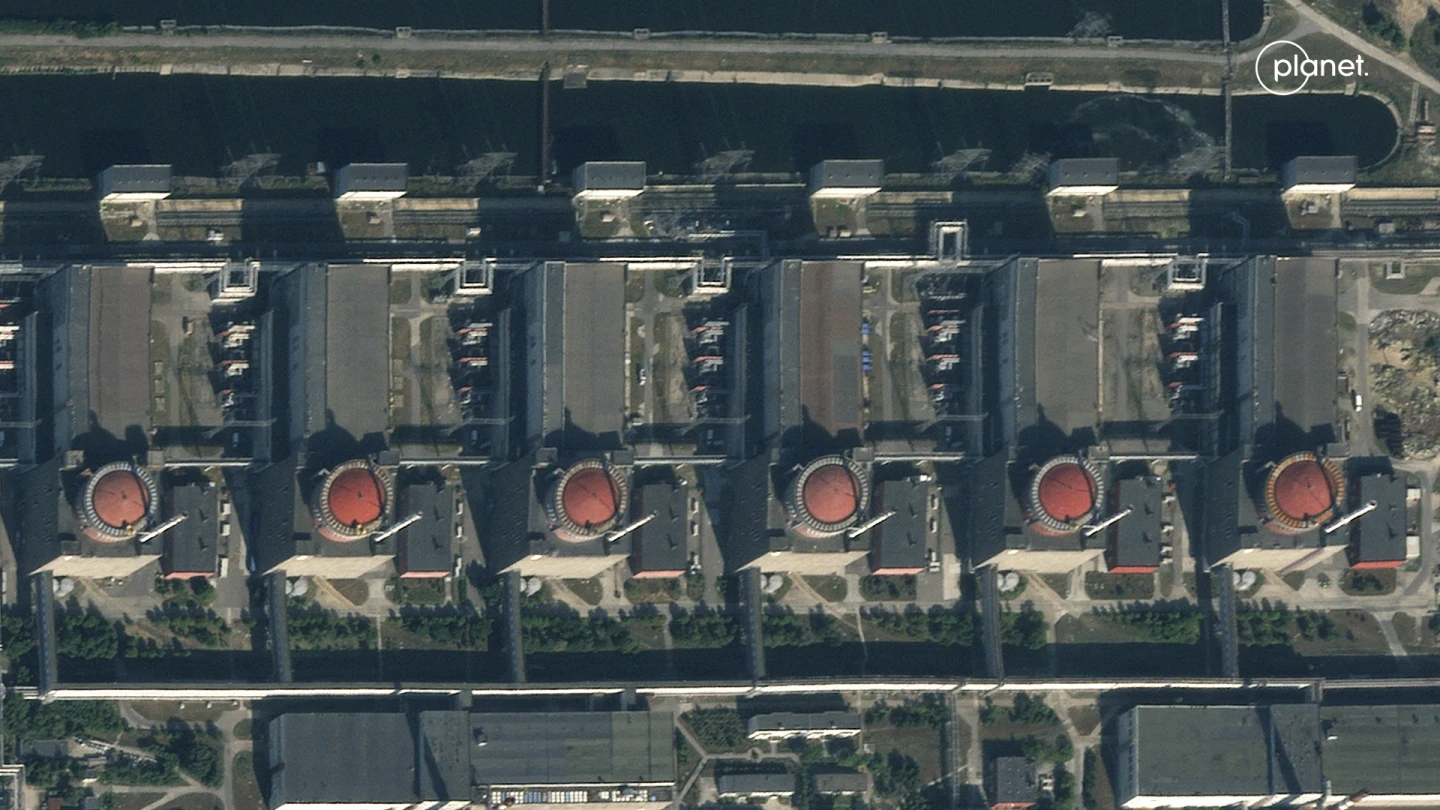Ukraine and Russia accused each other Wednesday of planning to attack one of the world’s largest nuclear power plants, but neither side provided evidence to support their claims of an imminent threat to the facility in southeastern Ukraine that is occupied by Russian troops.
The Zaporizhzhia Nuclear Power Plant has been a focus of fear since Moscow’s forces took control of it and its staff in the early stages of the war. Ever since then, Moscow and Kyiv have traded blame for shelling the facility and accused each other of nuclear terrorism.
Regular power outages resulting from shelling made it impossible to operate the plant safely, and its six reactors have been shut down to minimize the threat of a disaster.
Over the last year, the U.N.’s atomic watchdog repeatedly expressed alarm over the possibility of a radiation catastrophe like the one at Chernobyl after a reactor exploded in 1986.
Ukraine has alleged more recently that Moscow might try to cause a deliberate leak in an attempt to derail Kyiv’s ongoing counteroffensive in the surrounding Zaporizhzhia region. Russia is suspected of blowing up a dam in southern Ukraine last month with a similar aim.
Citing the latest intelligence reports, Ukrainian President Volodymyr Zelenskyy alleged Tuesday night that Russian troops had placed “objects resembling explosives” on top of several of the plant’s power units to “simulate” an attack from outside.
Authorities say at least one person was killed and 16 injured after a Russian-operated drone struck a residential building in the Ukrainian border city of Sumy on Monday. (July 3)
“Their detonation should not damage power units but may create a picture of shelling from Ukraine,” according to a statement from the general staff of Ukraine’s armed forces.
The Associated Press reviewed high-resolution satellite imagery of the plant taken Monday and Wednesday. The photos showed no visible changes to the roofs of the six concrete containment domes covering the reactors at the plant, or nearby buildings.
The International Atomic Energy Agency has officials stationed at the Russian-held plant, which is still run by a Ukrainian staff that oversees crucial cooling systems and other safety features.
The facility’s location in an area of intense fighting has put it at the mercy of stray shells or rockets and kept Ukrainian nerves on edge. The Russia-ordered evacuation of hundreds of local people in May deepened the anxiety. The IAEA has tried in vain to forge a deal on a security zone around the plant.
IAEA Director General Rafael Mariano Grossi said his agency’s most recent inspection of the plant found no activity related to explosives, “but we remain extremely alert.”
“As you know, there is a lot of combat. I have been there a few weeks ago, and there is contact there very close to the plant, so we cannot relax,” Grossi said during a visit to Japan.
In Russia, Kremlin spokesman Dmitry Peskov raised the specter of a potentially “catastrophic” provocation by the Ukrainian army at the nuclear plant, which is Europe’s largest.
“The situation is quite tense. There is a great threat of sabotage by the Kyiv regime, which can be catastrophic in its consequences,” Peskov said in response to a reporter’s question about the plant. He also claimed that the Kremlin was pursuing “all measures” to counter the alleged Ukrainian threat.
Grossi said he was aware of both Kyiv’s and Moscow’s claims and reiterated that “nuclear power plants should never, under any circumstances, be attacked.”
“A nuclear power plant should not be used as a military base,” he said.
Ukrainian officials have said the shut-down reactors are protected by thick concrete containment domes, and experts have said that the plant’s design allows it to withstand barrages. But the nuclear waste storage facility at the plant could be more vulnerable.
A Russian attack on the plant would “probably not lead to the widespread dispersal of significant amounts of radiation” due to precautionary steps taken by the IAEA, according to the International Institute for Strategic Studies, a think tank.
“A blast at Zaporizhzhia would spread radiation and sow panic, but the actual off-site radiation risk would be relatively low,’’ the think tank said in a recent assessment, adding that wind might blow some radiation toward Russia.
The most likely scenarios are a Russian-engineered explosion that exposes one of the reactor cores and starts a fire that burns spent fuel, or a blast involving the dry spent fuel on site that would carry the radiation far afield via wind, the IISS said.
Neither of those scenarios would bring a disaster on the scale of Chernobyl or Fukushima, Japan’s tsunami-wrecked nuclear plant, it said.
Renat Karchaa, an adviser to Russian state nuclear company Rosenergoatom, said there was “no basis” for Zelenskyy’s claims of a plot to simulate an explosion.
“Why would we need explosives there? This is nonsense” aimed at “maintaining tension around the Zaporizhzhia Nuclear Power Plant,” Karchaa said.
Russian media on Tuesday cited Karchaa as saying that Ukraine’s military planned to strike the plant early Wednesday with ammunition laced with nuclear waste. As of Wednesday afternoon, there was no indication of such an attack.
Last week, Ukrainian emergency workers held a drill to prepare for a potential release of radiation from the plant. In case of a nuclear disaster at the plant, approximately 300,000 people would be evacuated from the areas closest to the facility, according to the country’s emergency services.
(AP)











